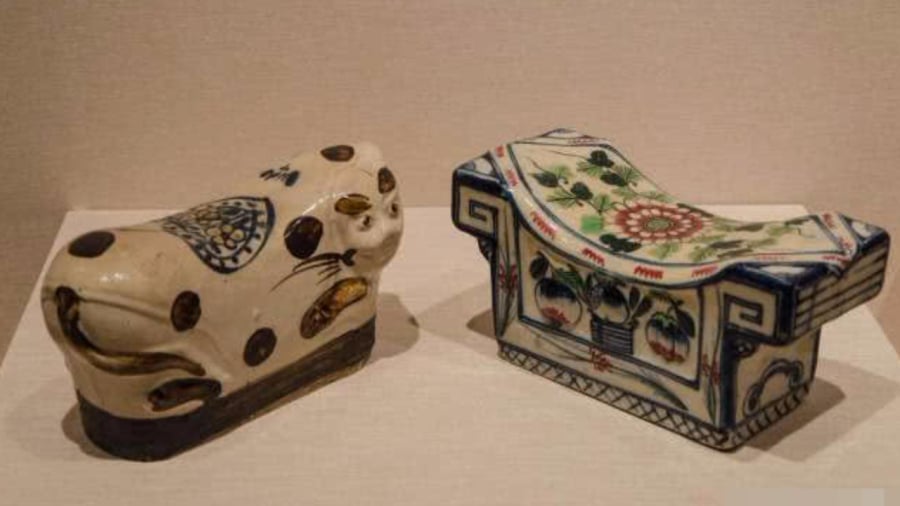For many people, pillows are an essential item for a good night’s sleep. While modern preferences often lean towards soft, fluffy pillows made of cotton, down, or memory foam, the pillows of yesteryear were quite different. In the past, people used hard pillows made of wood or ceramic. But why?
Why Did Ancient People Use Hard Pillows?
- Lack of Soft Materials:
One of the primary reasons for the use of hard pillows was simply a lack of soft materials, such as cotton or other fabrics, to make fluffy pillows.
- Health Benefits:
Contrary to what one might assume, hard pillows were designed with specific shapes to support the neck and alleviate pressure from certain points on the body. Sleeping on these pillows didn’t cause headaches or neck pain but instead helped improve respiratory issues.
Additionally, hard pillows were more hygienic as they didn’t absorb sweat like soft pillows, thus preventing the spread of bacteria and germs. Ceramic pillows, in particular, had excellent cooling properties, providing much-needed relief during hot summers before the invention of modern cooling methods.

- Durability:
Hard pillows were highly durable and could withstand environmental changes without deteriorating. Ceramic pillows, for instance, were resistant to moisture and mold. They were also low-maintenance, requiring only simple cleaning to remove sweat, dust, and impurities.
- Status Symbol:
The materials used for hard pillows often reflected the social status of the owner. Expensive and intricate pillows made from rare woods or fine ceramics with elaborate designs indicated wealth and prestige. Only affluent families could afford such luxurious headrests.
- Decorative Purpose:
Aside from their functional use, pillows were also considered decorative items that enhanced living spaces. Intricately designed pillows with elaborate embroidery were displayed not only in bedrooms but also in guest rooms and tea rooms, adding a touch of elegance and artistry to the surroundings.
In summary, the use of hard pillows made of wood or ceramic in ancient times was influenced by a combination of factors, including limited access to soft materials, health benefits, durability, and social status. These pillows served not only as sleeping aids but also as symbols of wealth and artistry, showcasing the craftsmanship of skilled artisans. However, with advancements in textile production and the introduction of Western influences, softer pillows eventually replaced the hard pillows of the past.
The Magic Bean: Unlocking the Power of Soy
In a world brimming with an array of nuts and beans, it’s remarkable that soy beans stand out as the golden child of the bunch. Their nutritional value and positive impact on human health are unparalleled. But that’s not all; these tiny beans are also the perfect companions for families on their journey towards a healthier and more balanced lifestyle.
Herbs and Their Hidden Meanings: Planting the Art of Ancient Wisdom.
Purslane, also known as Portulaca oleracea, is a succulent plant with a global reach and a plethora of benefits. This humble herb boasts a long history of culinary and medicinal use, especially in Asian cultures. Beyond its edible and healing properties, purslane also holds a special place in feng shui practices, believed to bring good fortune and positive energy to those who grow it.
Why Do Hotel Double Beds Always Have Four Pillows?
“Why do beds for two people often come with four pillows? It’s a question that often raises eyebrows, and the answer might surprise you. Imagine a bed, a sanctuary of comfort and relaxation, adorned with plush pillows that serve a purpose beyond mere aesthetics. These extra pillows are not just for show; they are the secret to a good night’s sleep and a boost to your overall well-being.”



































